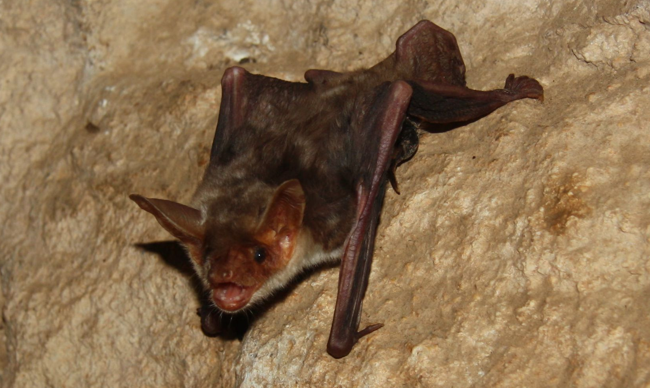Science News
Bat Navigation
July 23, 2014
by Molly Michelson

Echolocation is awesome, but it does have its limits. For bats, it only works for a short range, up to about 50 meters (or 164 feet). So how do these flying mammals find their way in the pitch dark after hunting insects hundreds of kilometers from their home roost?
Scientists suspected that orienting by polarized light might have something to do with it. Birds, insects, fish, reptiles, and amphibians use polarized light to get around, but there’s never been evidence that mammals can do the same.
“We know that other animals use polarization patterns in the sky, and we have at least some idea how they do it: bees have specially-adapted photoreceptors in their eyes, and birds, fish, amphibians and reptiles all have cone cell structures in their eyes which may help them to detect polarization,” says Richard Holland, of Queen’s University in Belfast. Holland and his colleagues wondered if bats might somehow use the patterns, too.
Polarization patterns depend on the Sun’s position in the sky. They’re strongest in a strip across the sky 90° from the position of the Sun at sunset or sunrise. So the scientists experimented with 70 female mouse-eared bats at sunset. The bats were put in a box equipped with different filters to manipulate the polarization pattern of sunlight. Some boxes preserved the true patterns, some were adjusted by 90°.
The team then took the bats to one of two release sites about 20 to 25 kilometers (12 to 15 miles) from their homes. They released the bats after midnight—when no polarization is visible—and followed the bats’ direction using small radio transmitters attached to their backs. The team discovered that the bats shown the true polarization flew right home. However, the bats shown the shifted pattern of polarized light headed off in a direction shifted 90° from home.
The researchers conclude that bats calibrate their internal magnetic compass by the way the Sun’s light is scattered in the atmosphere at sunset to, helping them to fly in the right direction. But just how the bats do this remains a mystery. “We don’t know which structure [in their eyes] these bats might be using,” Holland admits.
So the bat research continues. “Anything we can do to understand how they get about, how they move and navigate will be step forward in helping to protect them,” says Holland of the declining mammals.
The research is published this week in Nature Communications.
Image: Stefan Greif